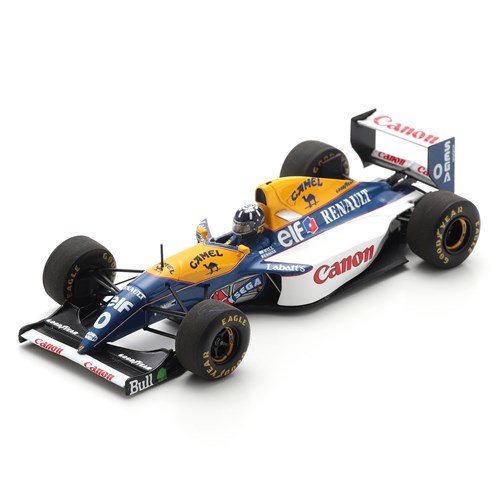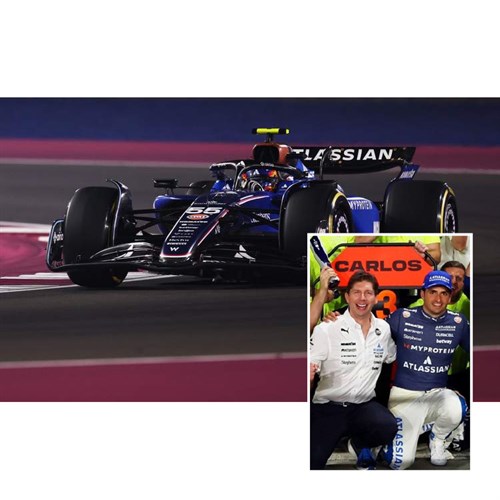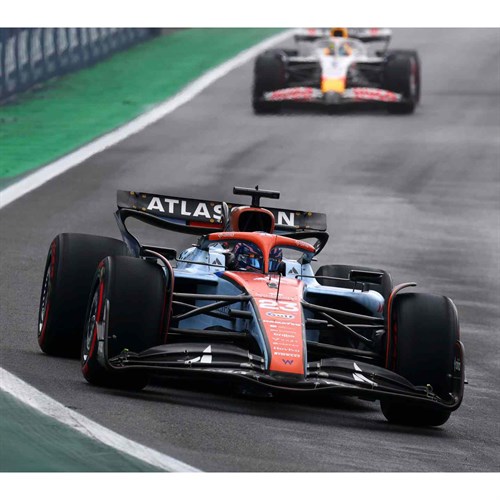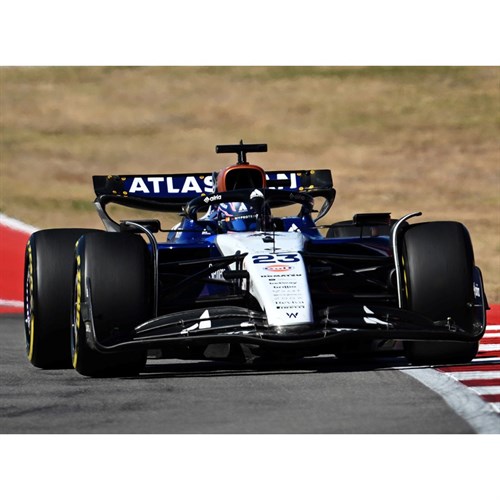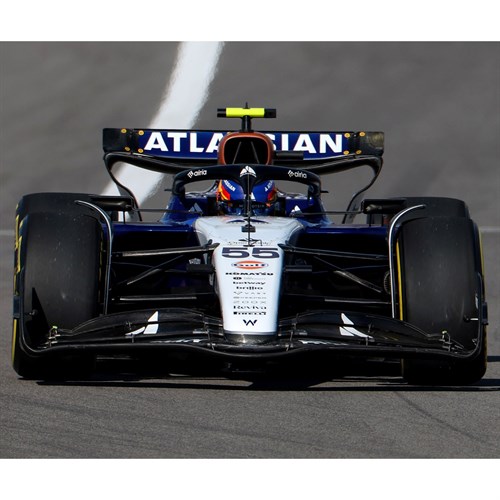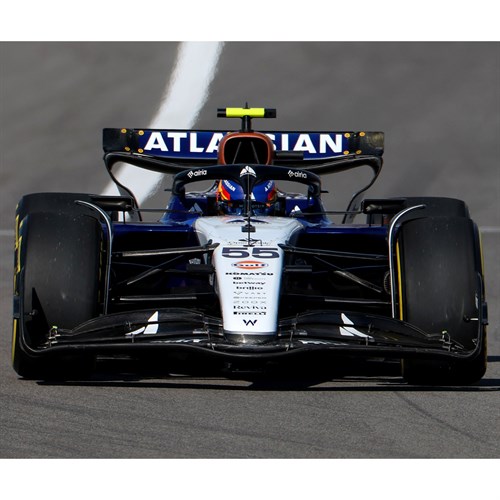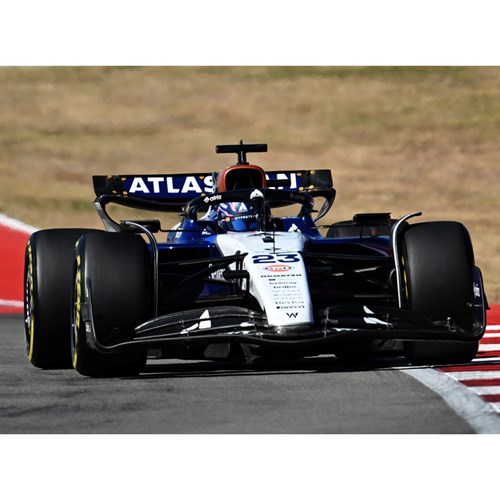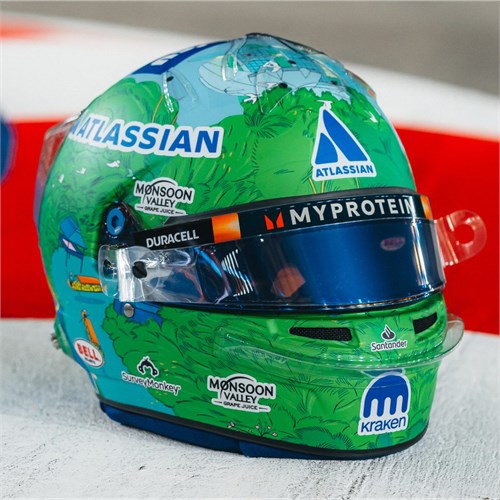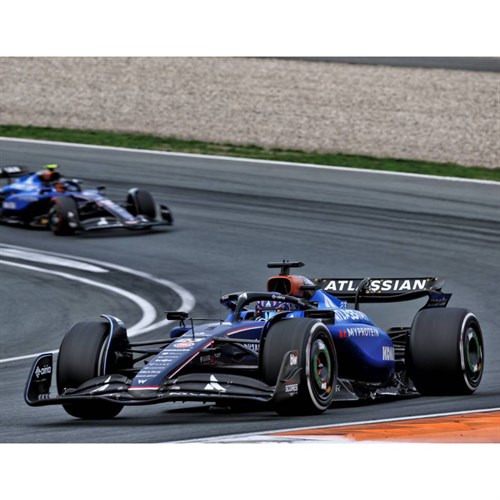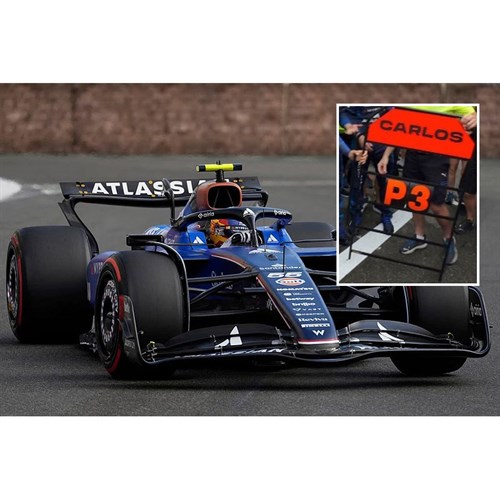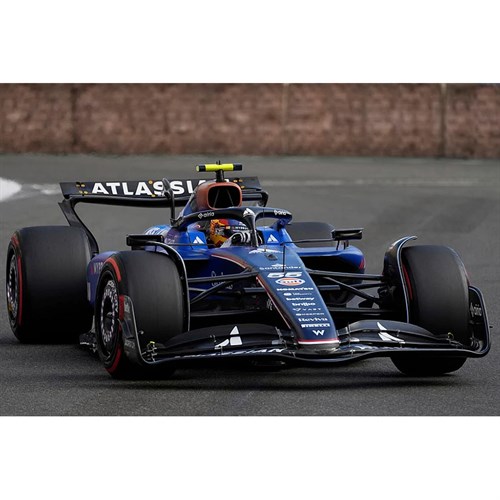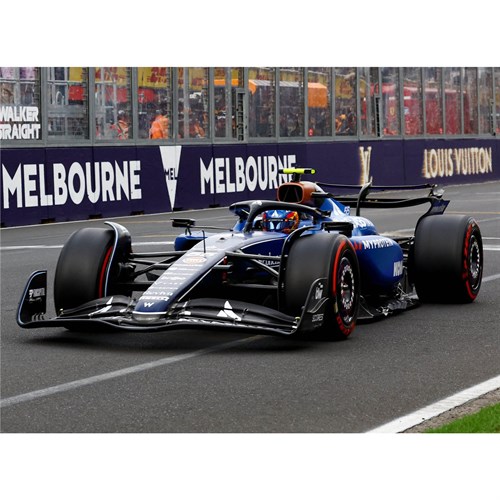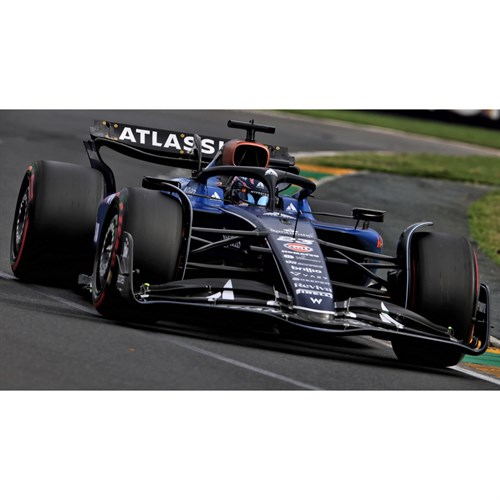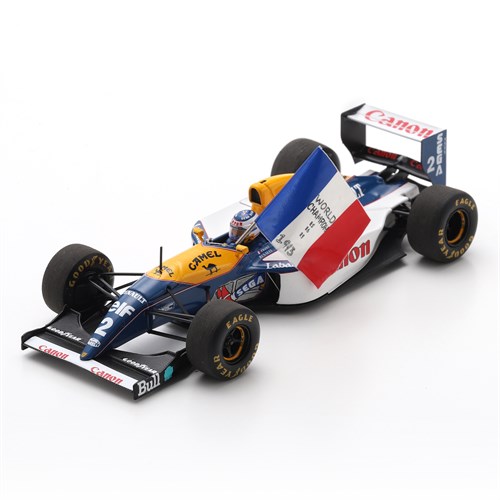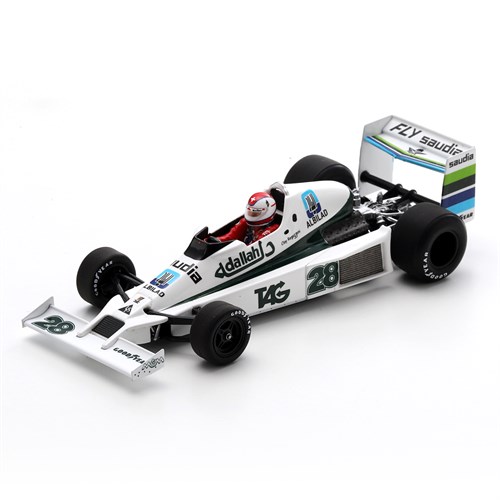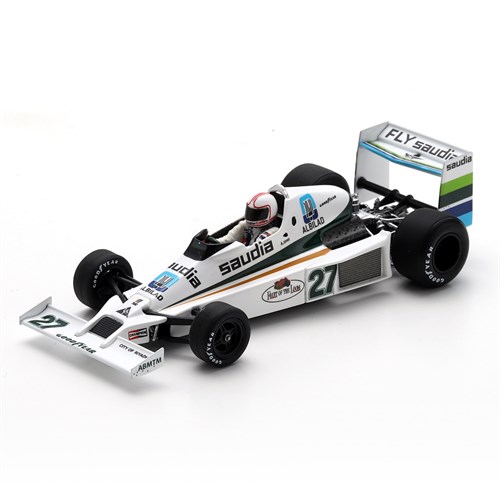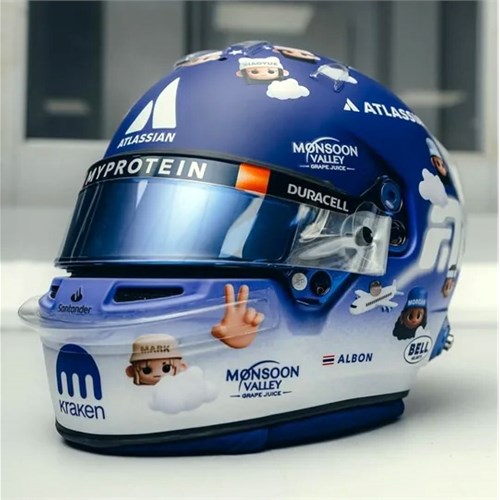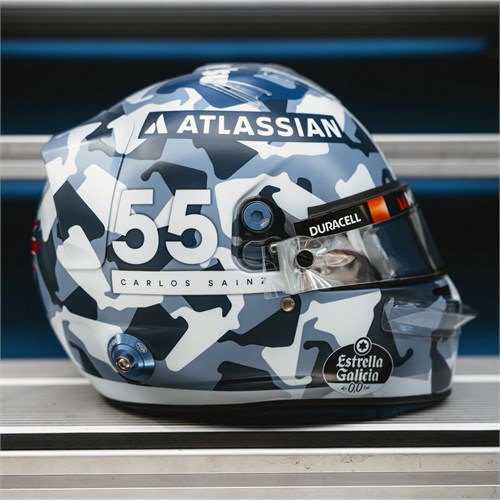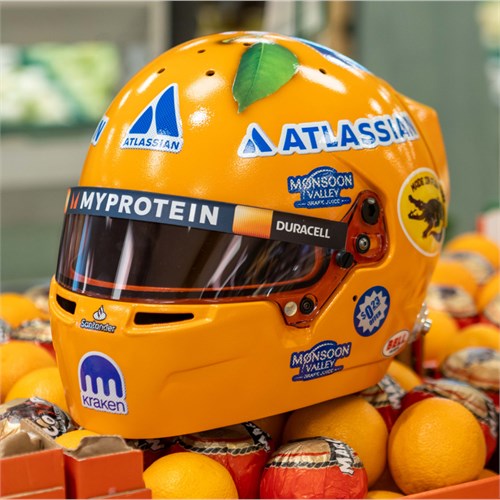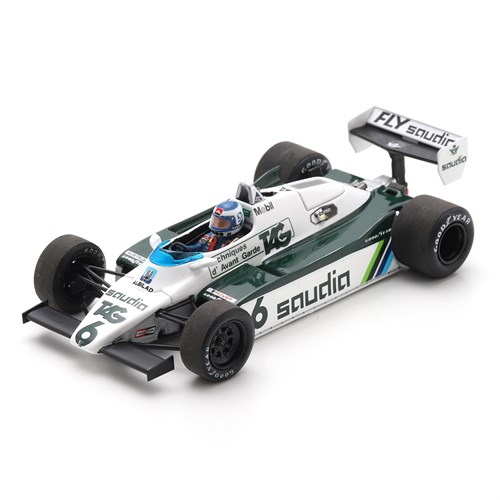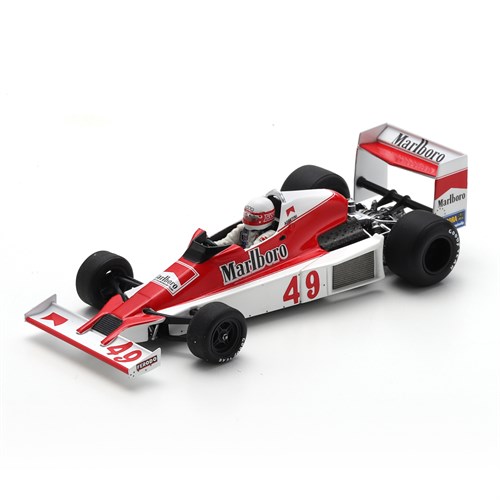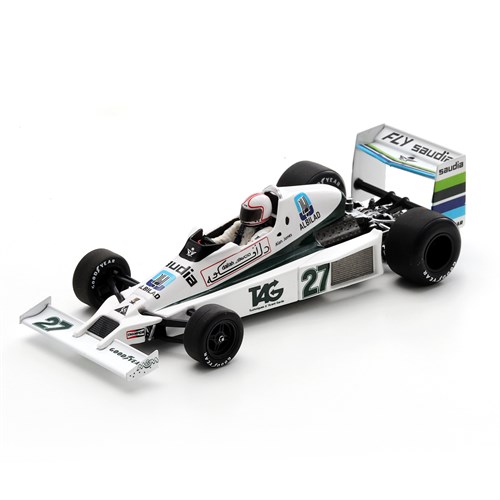- Menu
- Diecast brandsFeatured brandsAll diecast brands A - L
- F1 models
- Road carsSearch by marque A-JSearch by marque L-ZSearch by scale
- Motorsport modelsSearch by motorsportSearch by scale
- Motorbike modelsSearch by motorbike typeValentino Rossi
- Other models
- Models by Scale
- SaleSearch by product typeSearch by scale
- Stories
- Sign In
- Register
Williams Formula One model cars | Williams F1 models
Buy Williams F1 model cars from the UK’s largest stockist of resin and diecast models. Huge selection of 1:18 and 1:43 modern and classic Williams model cars include subjects manufactured by Minichamps, Spark and more.
Frank Williams first entered the Formula One world championship in 1969, with his Frank Williams Racing Cars concern. He ran a privately entered Brabham in his first season, with his great friend Piers Courage scoring a couple of second place finishes in the Monaco and American Grands Prix. Tragically Courage would lose his life in an accident at the Dutch Grand Prix the following year.
Through the 1970s Williams would field de Tomasos, Marches and Iso-Marlboros. Points finishes were few and far between, but there was a standout result of second place for Jacques Laffite in the 1975 German Grand Prix. After losing control of the team to his partner Walter Wolf, Frank Williams left the outfit that he had set up at the end of the 1976 season, and in 1977 started afresh with Williams Grand Prix Engineering. After running a privately entered March in 1977 Williams started building its own cars from 1978.
In 1979 Williams expanded from running one car to two, and also really hit the big time. After taking its first Formula One victory in the British Grand Prix, courtesy of Clay Regazzoni, his team-mate Alan Jones then went on to win three of the next four races. The team ended the campaign as the team to beat, and carried that momentum on into the 1980 season, the team winning its first drivers’ (through Jones) and constructors’ world championships.
The team repeated its success in the constructors’ championship in 1981, although Jones and Carlos Reutemann had to give best to Brabham’s Nelson Piquet in the drivers’ standings. In 1982 it was the other way around; Williams won the most competitive F1 season of all time with Keke Rosberg, but could only place fourth in the constructors’ points.
As in 1982, Williams only scored one win in each of the 1983 and 1984 campaigns, although now it had faded from championship contention. Things picked up again towards the end of the 1985 season when the Didcot squad won the last three races of the year; British hero Nigel Mansell scoring the first two wins of his career while Rosberg was victorious in the finale.
In 1986 Piquet replaced Rosberg, and the Williams FW11 proved to be the class of the field. Mansell and Piquet scored several wins apiece, but they also took valuable points off of each other, to the extent that Alain Prost was able to snatch the drivers’ crown from them, although Williams was triumphant in the constructors’ championship. In 1987 Piquet secured his third and final world title, as although he scored less wins than team-mate Mansell he was more consistent. The constructors’ prize was again Willams’.
Williams lost its potent Honda engines for 1988 and failed to win a race. For 1989 it had new Renault power units and now had Thierry Boutsen and Riccardo Patrese on its driving strength, the Belgian scoring his first two grand prix wins. In 1990 the two drivers scored a race win each.
Mansell rejoined the team for the 1991 season and the team became serious championship challengers once again, finishing second in both the drivers’ and teams’ standings. The team then enjoyed two utterly dominant seasons in 1992 and 1993, with Mansell and then Prost lifting the respective drivers’ titles.
Ayrton Senna joined the team in 1994, partnering with Damon Hill who had arrived 12 months previously. It was expected that the team would continue its domination, but tragically the Brazilian lost his life in the San Marino Grand Prix. Williams ended up hanging on to the constructors’ championship thanks to the efforts of Hill, Mansell and David Coulthard, but Hill was just pipped to the post in the drivers’ points by Benetton’s Michael Schumacher after a controversial collision in the final race.
Schumacher and Benetton were dominant in 1995, restricting Hill and Williams to the runner-up spot in their respective championships. In 1996 Williams was on top form, winning 12 of the season’s 16 races, Hill besting new team-mate Jacques Villeneuve to become world champion. In 1997 it was Villeneuve’s turn (Hill having left the team) after a close battle with Schumacher (now with Ferrari), after another end-of-season clash instigated by the German.
Williams was then hit by the withdrawal of its engine supplier Renault, only scoring the odd podium across 1998 and 1999 and failing to stand on the top step. It entered a new alliance with BMW in 2000 that started to bear fruit the following season, Ralf Schumacher and Juan Montoya scoring a handful of grand prix victories between them over the next few years. However, Montoya’s win in the season-ending 2004 Brazilian Grand Prix would prove to be the team’s last win for almost a decade, as well as its penultimate to date.
From 2005 podium finishes became a rarer and rarer occurrence, with even points finishes becoming something worth celebrating by the end of 2013. The one anomaly came in the 2012 Spanish Grand Prix, where out of nowhere Pastor Maldanado somehow won the race from pole position. That remains Williams’ last Formula One victory.
In 2014 Williams enjoyed the use of customer Mercedes engines, the German manufacturer dominating the initial phase of the new turbo engine rules set. This allowed Valtteri Bottas and Felipe Massa to score several podium finishes over the next couple of seasons, but as before they started becoming harder to achieve before it was all the team could do to even score a point. Williams slumped to 10th/last in the constructors’ championship for three years running from 2018 to 2020 (returning just seven, one and zero points respectively), before improving slightly to eighth place in 2021, mainly thanks to the efforts of George Russell.
2022 saw Williams back down to the bottom of the constructors’ table, before it made a real step forward in 2023, mainly due to some highly impressive performances from Alexander Albon, who finished in the points on seven occasions. This helped the team to an improved seventh position in the teams’ standings.
Albon stayed on for a third term at Williams in 2024, while Logan Sargeant was replaced with Franco Colapinto two thirds of the way through the season after several disappointing performances. Both Albon and Colapinto scored points, but the Didcot squad slipped to ninth in the constructors' table. Albon remains at the team for 2025, and is joined by Carlos Sainz Jnr from Ferrari.
read more
Loading more products ...





